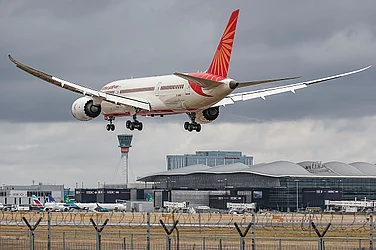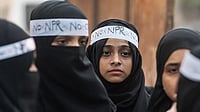During the 10-day Ganesh Chaturthi celebrations in Maharashtra, Chief Minister Eknath Shinde visited nearly 30,000 venues across the state. These included big and small pandals, as well as private households. One of the homes he visited was that of Milind Narvekar, a close confidante of his bête noire Uddhav Thackeray.
Shinde was earlier a member of the Shiv Sena, led by Thackeray. However, in June, he led a faction of members of the Legislative Assembly from the Shiv Sena that broke away from the party and formed a coalition with the Bharatiya Janata Party (BJP). As a result of this, Thackeray, the then Maharashtra CM who was heading a coalition government with the Congress and the Nationalist Congress Party, was forced to resign. Shinde was appointed Maharashtra’s CM, with BJP leader and former CM Devendra Fadnavis as his deputy.
As Shinde crisscrossed Maharashtra, Mantralaya—the administrative headquarters of the state government in Mumbai—wore a deserted look as ministers stayed away. But with elections in several municipal corporations, including India’s richest civic body, Mumbai’s Brihanmumbai Municipal Corporation (BMC), slated this year, festival diplomacy is vital to reach out to the people of the state.
Shinde has also staked a claim to the Shiv Sena’s party symbol, claiming his faction is now the real party. However, keeping his flock together could be a challenge as some of them are unhappy because they have not been made ministers, say sources aware of the political landscape in the state.
A glorious legacy
The political legacy of Ganesh Chaturthi dates back to the late 19th-century. The first community Ganesha festival was started by Bhausaheb Laxman Javale aka Bhau Rangari, in 1892. He installed a three-foot-high Ganesha idol at Budhwar Peth in Pune that is still in use. Then, in 1894, nationalist leader Lokmanya Bal Gangadhar Tilak began celebrating Ganeshotsav in a big way. One reason was to allow freedom fighters to interact with the people under the cover of the crowds. He installed his own Ganesha idol at Kesari Wada in Pune and lent scale to the freedom movement, says Sunanda Pitre, a chronicler of history.

“Tilak saw great potential in using Ganeshotsav as an opportunity to mobilise Indians against the British. Ganesha was already being worshipped in Gujarat, Rajasthan, and Goa—areas outside Maharashtra with a significant Marathi population. Taking this festival out of people’s homes and making it a public event had great appeal,” says Pitre. In Mumbai, the first public Ganeshotsav mandal committee was formed at Keshav Naik Chawl in Girgaum. Workers at Mumbai’s textile factories popularised the festival.
Staging a comeback
This year, with the pandemic waning, mega celebrations have staged a comeback. Both private households and public mandals have installed idols in large numbers, says a BMC source. Word-of-mouth publicity about the prowess of the deity at certain pandals has led to huge leaps in their popularity. Lalbaugcha Raja at Parel in central Mumbai tops the charts. Crores of devotees who visited it this year are testimony to its popularity.
Devotees believe that the deity at Lalbaugcha Raja fulfils the mannat (wishes) of all those who visit it. People from around the country turn up for darshan. There is a separate queue for those making special offerings and seeking wishes at the Lalbaugcha Raja pandal. “Once, this queue stretched on for nearly 5 km,” says Jaishree Pant, a New Delhi resident who came down this year to make an offering. “I had heard about the power of Lalbaugcha Raja. He has fulfilled my wish too.”
Pant stood in queue for over five hours before she got a glimpse of the deity. Though other Ganesha mandals in Mumbai, too, have testimonies from worshippers about the divine prowess of their idols, their crowds are smaller than Lalbaugcha Raja. Many of the pandals also livestream celebrities who visit. This year, Union Home Minister Amit Shah and his son Jay Shah were among the celebrities who visited Lalbaugcha Raja. Offerings in the form of cash or gold and silver have increased significantly over the years.
Discord and harmony
Ganeshotsav celebrations have, however, not always been harmonious. In 1893, one celebration at Pydhonie in south Bombay led to a riot between Hindus and Muslims. “This was the first instance of a Hindu-Muslim riot in the erstwhile Bombay Presidency,” says a historian who did not want to be named, and adds, “The problem was with the playing of music at a Hanuman temple in Pydhonie. There was so much violence in other parts of the city that the Army had to be called in. About 75 people lost their lives. Before the riots, Hindus also participated in the Muharram procession, but after the riots, the communal harmony ended.” Tilak, through his Marathi paper Kesari, encouraged both communities to take part in each other’s religious festivals. “Even today, in Mumbai and Pune, which have the biggest Ganeshotsav celebrations in the state, the Muslim community participates very enthusiastically,” says Pitre.

When the idol at Lalbaugcha Raja is taken for immersion in the Arabian Sea, the procession passes through Bhendi Bazaar that has a high Muslim population. The residents here often step out of their homes to offer flowers to the deity and distribute sweets. This decades-old tradition did not stop even when the city was reeling from Hindu-Muslim riots in the late-1980s and early-1990s. When the Shiv Sena first came to power in 1995, it ensured that the festival grew. Even when they got voted out in 1999, Sainiks connected with devotees on the festival days. When the party came back to power along with the BJP in 2014, the focus was back on the festival.
New times, new look
Over the years, the Ganesha idol has come a long way from being adorned in lighter colours and bearing a modak (a coconut-and-jaggery sweetmeat), says Yeshwant Chalke, an idol maker from Alibaug near Mumbai. These days, idols in black, grey, dark red and dark blue are common, depending on the communities installing the idol, he says. “In the traditional posture, Ganesha sits with one leg folded and the other on the ground. Many mandals, however, prefer the standing or dancing Ganesha holding a long trident. Though Ganesha has only four hands, people want idols with 10 hands or multiple heads,” says Chalke. “They want the idol to look like a destroyer. This is not auspicious. But that is the demand, so we make it.”
According to Dadaji Joshi, a priest, ‘ferociousness’ has entered Ganesha festivity because the younger generation is handling the mandals. “They are not bothered about tradition or the reason why the idol should be made in a certain way. I was called by a mandal to do puja, but it was a dark blue dancing idol. Though my mind rebelled, I did the puja as I would have been beaten up if I refused,” says Joshi. “People are becoming more aggressive, and this definitely reflects in their choice of idols,” he says.
(This appeared in the print edition as "Ganeshotsav: Pomp After a Two-Year gap")
Haima Deshpande in Mumbai


























